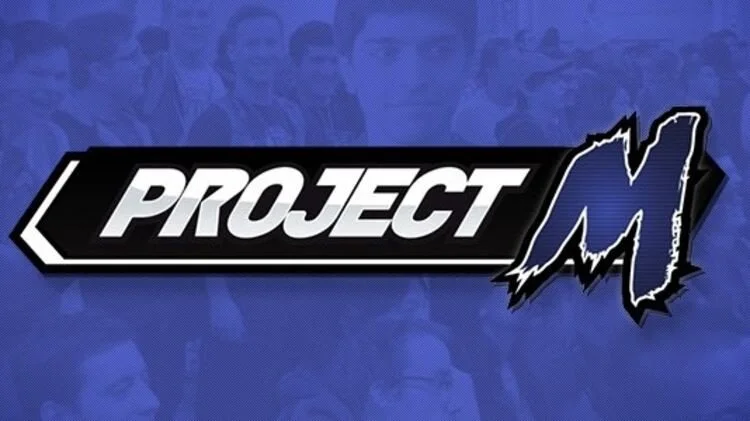Down, smash
A complicated relationship with fighting games
Perusing the shelves of used games stores has recently become a hobby of mine, as I search for that rare treasure that is a Gamecube controller. Something about the abstract curves and the asymmetry of the buttons makes it an oddly perfect input for one of the greatest friendly fighting games of all time: Super Smash Bros. (SSB). A game adored by millions, and yet one that I spent many years hating.
Side note: there’s an argument to be made that Smash is a brawler and not a traditional fighting game and I really don’t care; moving on
The community around fighting games is unconventional compared to others: a rag-tag bunch from myriad different backgrounds, financial tiers, and age ranges. A group of fans who are immediately accepting if you show up controller in hand; they’re always ready to show you how to play better because it will mean more exciting matches for them. It’s all those idiosyncrasies which make it feel that much closer to my heart, but to be fair, it hasn’t always been that welcoming to me. Numerous times my friends would thrust a controller into my hands, goad me to play, then proceed to wipe the floor with my punching-bag corpse. From an early age you can imagine how this discouraged me from wanting to play, and there’s a great reason for that: they were being assholes. I didn’t grow up with games like most of these kids: My brother and I pooled our money together to buy a PS2, the first console we ever owned despite the continued tenacity of childhood pestering. Yet my opponents in Smash grew up on SNES memorizing Street Fighter 2, on N64 playing Smash 64, and finally Gamecube with SSB Melee. They had logged aeons on the couch, crammed up against each other, learning the minutiae of each colorful cartoon brawler. By the time I got around to playing it was no contest.
That abrasiveness made it easy to give up on the game. Dropping it like a bad habit because no one ever took the time, or cared enough to show me the ropes, to give me a fighting chance. Smash was a brotherhood of exclusivity where newcomers were unwelcome — and I was more than happy to stay out. Time passed by, as did Melee and Brawl. Each new iteration was just another reason to cement why I didn’t like this elitist pissing contest. The circumstances of turning a new leaf with Smash and rediscovering it were…complicated. It involved more supportive friends, and something that was slightly more in-depth known as ‘Project M’ that I’ll try my best to explain.
This next section is for me to show off useless specific technical, trivia feel more than free to skip ahead if you wish
For the competitive community, SSB Melee was and always will be the pinnacle of competitive Smash. And SSB Brawl was, in every way, a calculated slap in the face from Nintendo. Because their games were/are oriented towards children, Nintendo was none too happy to see their casual brawler series turned into a global hit within the adult fighting scene. This led them to add something maliciously devious to their newest game at the time: Tripping. In an effort to combat any serious play, SSB Brawl added a random trip percentage to matches, completely unbalancing any chance of serious competition which directly hurt the community. Sure Brawl looked nicer, and it had fewer bugs, more characters, more levels, but most of all the creators had guaranteed that the people who loved it most would never be able to play it competitively.
Enter Project M, the passion project to undo all of that ill-will and additionally put work towards polishing the game fans had always desired. It all started when a group of disgruntled fans, unhappy with the way SSB Brawl had turned out, came together to make a superior, refined version of the series they used to love. What came about from their years of sleepless nights without funding was a beautiful Frankenstein of all the moves and characters from past games they had grown up with (plus some new extras) minus the loathed addition of tripping. They had finally compiled and released a competitively viable version of SSB Brawl.
THIS was the first Smash game I ever truly had any experience with. I was finishing high-school and going into college, I had a wonderful group of friends, friends who took the time to sit me down and go through the basics of the game with me. They spent time practising more complicated strategies and plays. They introduced me to their enthusiasm for this thing and that has made all of the difference. I was able to come into the game at a point where the graphics had improved, exciting characters had been added, and there were people around patient enough to share this thing, which had always been an elusive mystery, with me.
What followed were countless nights of the sort of friendly bonding game magic that I’d been missing out on. More importantly though, it was a gateway to understanding that community and being accepted as a welcome part of it. My friends and I started going to tournaments together, watching it being streamed on twitch, spent time each week honing skills and techniques; it became a lifestyle. It was around this time that SSB4 came out and essentially perfected all of the problems that were inherent to the last game, as well as (unexpectedly) finally receiving the official tournament blessing from Nintendo. Every day was time spent huddled around the TV, Ike vs. R.O.B., Captain Falcon flying in with a tingly knee; these memories are something that are particularly special to me. By then you could play with up to 8 people at a time, which meant an expanded circle of friends. Friends who weren’t as welcoming, who required loads of additional controllers that were never put away, and many nightly raids on my fridge, as well as a growing feeling of disrespect. What had started as wonder and joy quickly soured into chores, bitterness and once again assuming the role of an outsider.
After inevitably moving away from that scene again, time passed and I found myself enjoying more single-player endeavours. Occasionally I’d check in on different fighting tournament streams or find interest in some passing news about new additions to some fighting games but that initial spark my friends had originally fostered had become dark and distant. Recently though, that passion has again welled from deep within me (whether through loneliness or longing) and driven me to seek out the feeling once again. I’ve met a new group of encouraging people to surround myself with, who bring back the joy I missed from the camaraderie of sitting together on a couch, missed the good times of ‘man vs machine’; of good natured trash-talking, and picking apart the roster to figure out who most suited a play-style. In order to make those escapades return I ended up bidding on Ebay for a used Wii U and set up Smash in my office. Once again I bathed in the sounds of swords and punches echoing through the TV as I introduced a skeptical but eager generation to this special addiction, playing most every lunch.
This whole journey has shaped my view of fighting games and the community and it’s an important shift. Before where I had only ever seen the trash talking and the competition I now see that explaining it to others and sharing it is what the heart of it really is: Lifting each other up. Taking the time to introduce people slowly and show them the same patience, welcoming atmosphere, and practice that finally got me involved. To instill in others that jubilation, curiosity, and drive to get better is more than I could get from many other team based hobbies that I have pursued.
My habit of looking in used games stores continues, as I hunt for the ideal controllers for this experience, one that has been burned into my mind and something that’s impossible not to share. Placing that weird plastic, purple, amorphous-blob of a controller into a friend’s hand and preparing them to take a dive into this shit show, together.



